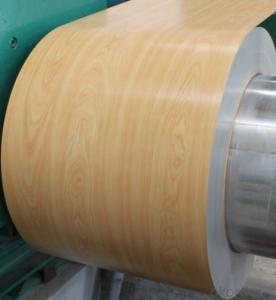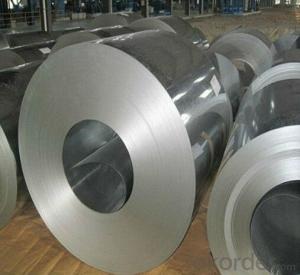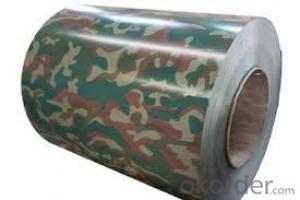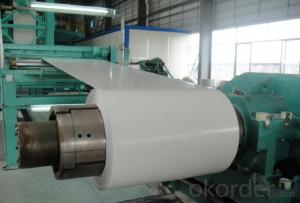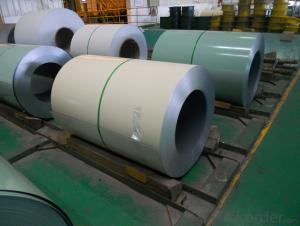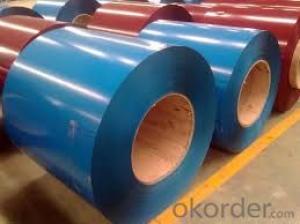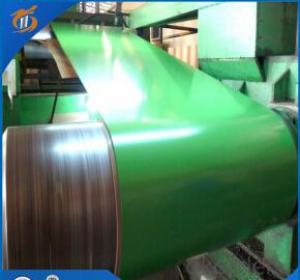Widely Used Color Coated Steel Coil/Al-Zn Steel Coil/PPGI
- Loading Port:
- Tianjin
- Payment Terms:
- TT OR LC
- Min Order Qty:
- 25 m.t.
- Supply Capability:
- 50000 m.t./month
OKorder Service Pledge
OKorder Financial Service
You Might Also Like
Specification
1.Application:
Construction | Outside | Workshop, agricultural warehouse, roof panel, wall panel in steel structure in warehouse,corrugated roof, roller shutter door, rainwater drainage pipe, retailer booth |
| Inside | factories exhibition hall,doorcase, light steel roof structure, folding screen, elevator, stairway | |
Electrical appliance | Refrigerator, washer, switch cabinet, instrument cabinet, air conditioning, micro-wave oven, bread maker | |
Furniture | Central heating slice, lampshade, chifforobe, desk, bed, locker, bookshelf | |
Carrying trade | Exterior decoration of auto and train, clapboard, container, isolation lairage, isolation board | |
Others | Writing panel, garbage can, billboard, timekeeper, typewriter, instrument panel, weight sensor, photographic equipment | |
2.Features:
With excellent cold-rolling steel strips as base material, it has the advantages of
.Good manufacturing performance
.High impact resistance
.Uniform plating thickness
.High adhesive force
.No peeling after forming
.High corrosion resistance
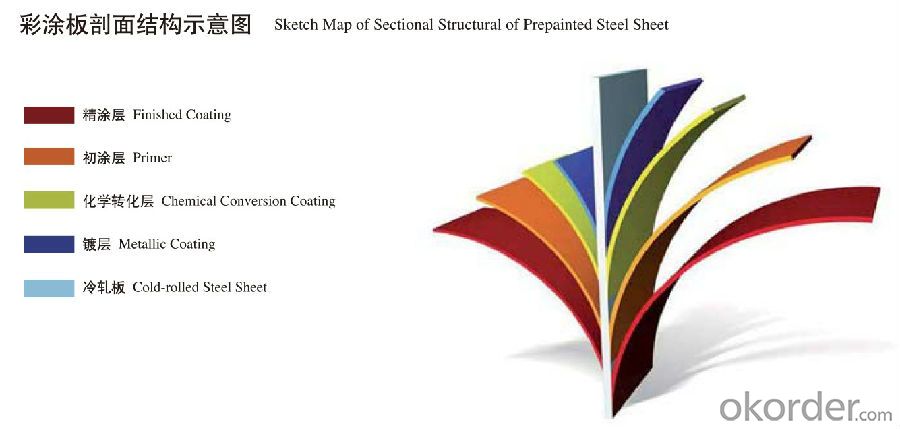
3.Details:
Base Material | Al-Zn Galvanized Steel Coil.SGLCC |
Top Side | 15-25 microns |
Back Side | 5-8 microns |
Width | 700-1250mm |
Thickness | 0.3-1.0mm ,thickness tolerance: +/- 0.02mm |
Al-Zn Coating | 30-150g/sq.m |
Spangle | Regular/Zero/Big |
Color | All RAL Color,or be customized |
Coil ID | 508mm&610mm |
4. Images of steel coils:

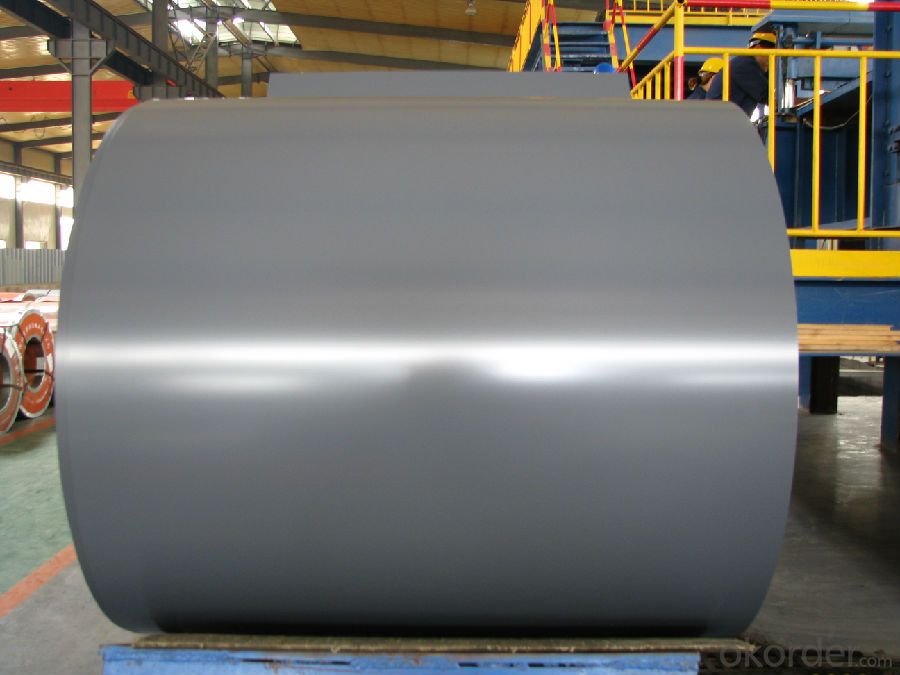
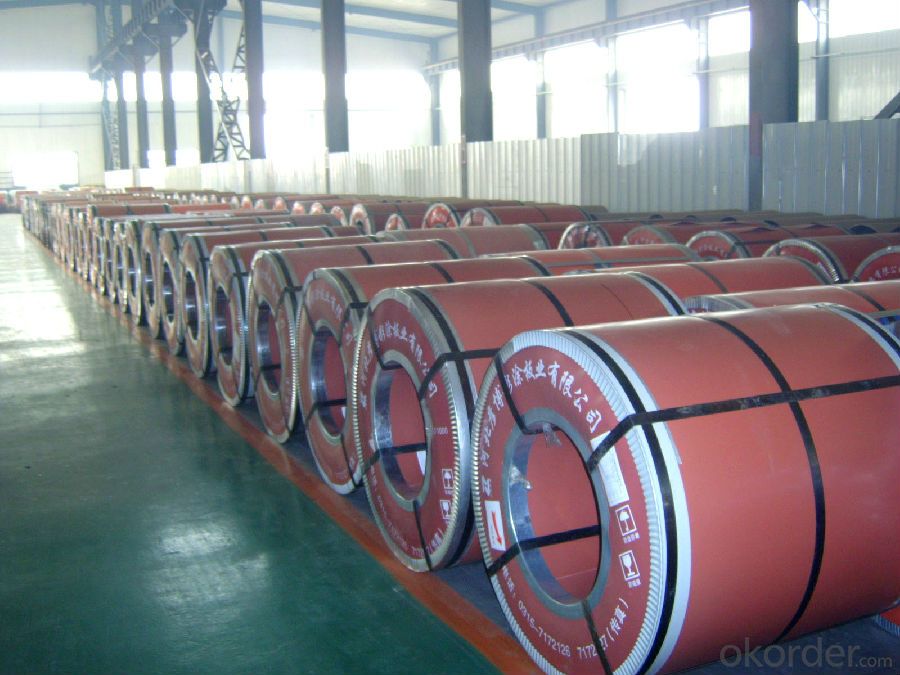

5.FAQ
We have organized several common questions for our clients,may help you sincerely:
①How about your Warranty?
Warranty: 1-Year for the whole light. Warranty is based on correct storage, installation, using and maintenanc
②How to guarantee the quality of the products?
We have established the international advanced quality management system,every link from raw material to final product we have strict quality test;We resolutely put an end to unqualified products flowing into the market. At the same time, we will provide necessary follow-up service assurance.
③How long can we receive the product after purchase?
In the purchase of product within three working days, We will arrange the factory delivery as soon as possible. The pecific time of receiving is related to the state and position of customers.Commonly 7 to 10 working days can be served.
- Q: Does steel contain nickel?
- Stainless steel is a steel than contains at least 10% chromium. But there are many nuance of stainless steel, with different composition for various applications, and some do contain nickel. But not all types of stainless steel contain nickel.
- Q: Can steel coils be stored vertically?
- Yes, steel coils can be stored vertically.
- Q: How do the sandpaper grits compare with different coarse levels of steel wool? For example, I'm finishing a homemade entertainment center, and using a tinted polyurethane, and it says to use 000 grade steel wool, but mine is #3, could I use some sanpaper instead, and what grit?
- Steel wool and wax is for the final buff after the finish coat. Sanding will scratch the finish and should only be done before the finish coat. Steel wool and wax have been used as the final finish to remove rough areas and buff the finish for a long time.
- Q: I don't know why but I'm having a VERY difficult time finding the melting point of 1008 steel.
- 1. okorder 2. Input (melting point 1008 steel) as the search string 3. Check the links; the third one showed the answer in an MSDS
- Q: Is steel easier to weld?Which is more brittle/less flexible?
- Yes you can, but you really dont want to. Aluminum conducts heat better than steel so the weld would not cool evenly and would be brittle. You would be better off using a bracket or bolt straight on.
- Q: What are the common applications of coated steel coils?
- Coated steel coils find a wide range of applications in various industries due to their excellent properties and versatility. Some of the common applications of coated steel coils include: 1. Construction: Coated steel coils are extensively used in the construction industry for roofing, cladding, and wall panels. The coating provides superior corrosion resistance, weatherability, and durability, ensuring long-lasting structures. 2. Automotive: Coated steel coils are widely used in the automotive industry for manufacturing components such as body panels, bumpers, and chassis parts. The coatings enhance the aesthetics, provide protection against corrosion, and improve the paint adhesion for a flawless finish. 3. Appliances: Coated steel coils are utilized in the production of household appliances like refrigerators, washing machines, and ovens. The coatings provide a smooth, attractive finish and protect the steel from moisture and other environmental factors. 4. HVAC Systems: Coated steel coils are commonly used in Heating, Ventilation, and Air Conditioning (HVAC) systems for manufacturing ductwork, air handling units, and heat exchangers. The coatings ensure resistance against corrosion and improve the overall efficiency of the system. 5. Furniture: Coated steel coils find application in the furniture industry, where they are used for manufacturing cabinets, tables, and chairs. The coatings provide a decorative finish while protecting the steel from wear and tear. 6. Electrical equipment: Coated steel coils are utilized in the production of electrical equipment such as switchboards, control panels, and enclosures. The coatings provide insulation and protection against electrical conductivity while ensuring durability. 7. Packaging: Coated steel coils are used in the packaging industry for manufacturing cans, containers, and closures. The coatings act as a barrier against moisture and prevent contamination, ensuring the preservation and safety of the packaged products. In conclusion, coated steel coils have numerous applications across various industries due to their corrosion resistance, durability, aesthetics, and protective properties. From construction to automotive, appliances to furniture, and even in electrical equipment and packaging, coated steel coils play a crucial role in delivering high-quality products and ensuring long-lasting performance.
- Q: Can anyone suggest a free font that looks like steel with rivets? I'm looking for something industrial looking.
- Steel Font
- Q: which is the most tough and durable steel type ??
- C'mon. Really? That's your question? How about some actual details like the application, is it going to be formed into a shape, do you need to weld it, what type of environment like corrosion and temperature is it going to be subject to? There are roughly 2,000 grades of steel and a couple hundred grades of stainless steel. Steels can be soft or they can be exceptionally hard. We need more info please.
- Q: How are steel coils protected against UV radiation?
- Steel coils are protected against UV radiation through a process known as coil coating. Coil coating involves applying a protective layer of paint or coating to the surface of the steel coil. This coating acts as a barrier between the steel and UV radiation, preventing direct exposure of the metal to the harmful effects of the sun's ultraviolet rays. The protective coating used for steel coils is specially formulated to provide excellent resistance against UV radiation. It typically contains pigments and additives that are designed to absorb or reflect UV light, reducing the amount of radiation that reaches the steel surface. Furthermore, the coating is applied in multiple layers to ensure maximum protection. The first layer, known as the primer, enhances adhesion to the steel surface and provides additional corrosion resistance. The subsequent layers, such as the base coat and topcoat, offer improved durability and UV resistance. In addition to the coating itself, the steel coils can be further protected against UV radiation by storing them in shaded areas or using covers to shield them from direct sunlight when stored outdoors. This additional precaution helps minimize the exposure of the coated steel coils to UV radiation, thereby prolonging their lifespan and maintaining their appearance. Overall, the combination of a high-quality protective coating, proper storage, and handling practices ensures that steel coils are effectively shielded against the damaging effects of UV radiation, allowing them to maintain their structural integrity and aesthetic appeal over an extended period of time.
- Q: I like non-stick cookware but it dont hold up no matter how much money you spend. What isthe best kind? Is there something better then stainless steel or iron skillet? I do not care if I have to use extra elbow grease to clean a pan.
- Some utensils are both cookware and bakeware. The choice of material for cookware and bakeware items has a significant effect on the item's performance , particularly in terms of thermal conductivity and how much food sticks to the item when in use. Some choices of material also require special pre-preparation of the surface - known as seasoning - before they are used for food preparation. Stainless steel cookware is a great choice for safe cooking. Many kinds of cookware react with the foods, either changing the taste of the food or even releasing harmful materials into the food that can cause imbalances or diseases. Many non-stick coatings like teflon are safe - but once they get scratched or overheated they can start to leak chemicals in the food that are according to some scientific studies dangerous and possibly carcinogenic. Both the cooking pot and lid handles can be made of the same material, but will mean that when picking up or touching either of these parts oven gloves will need to be worn. In order to avoid this, handles can be made of non heat conducting materials, for example bakelite, plastic or wood. It is best to avoid hollow handles because they are difficult to clean or to dry.
Send your message to us
Widely Used Color Coated Steel Coil/Al-Zn Steel Coil/PPGI
- Loading Port:
- Tianjin
- Payment Terms:
- TT OR LC
- Min Order Qty:
- 25 m.t.
- Supply Capability:
- 50000 m.t./month
OKorder Service Pledge
OKorder Financial Service
Similar products
Hot products
Hot Searches
Related keywords
